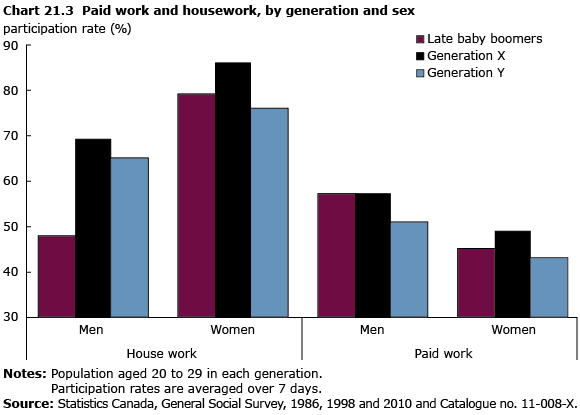Generational shifts in paid and unpaid work
Archived Content
Information identified as archived is provided for reference, research or recordkeeping purposes. It is not subject to the Government of Canada Web Standards and has not been altered or updated since it was archived. Please "contact us" to request a format other than those available.
Related information
Young adults' involvement in paid work and unpaid work—housework, child care and shopping—has changed over the past quarter century. In general, men still spend more time doing paid work than women do, and they spend less time on unpaid work.
But that difference is narrowing by the generation. For example, at ages 20 to 29, late baby-boom men (born 1957 to 1966) did 1.4 hours more paid work per day on average than women did, while the difference for Generation X (born 1969 to 1978) was 1.3 hours. By the time Generation Y (born 1981 to 1990) arrived in the same age range, this difference narrowed to 1.1 hours.
Late baby-boom women aged 20 to 29 did 1.2 hours more unpaid work per day than men. For Generation Y women aged 20 to 29, the difference narrowed to 0.4 hours, the result of a fall in the time women spent on housework. In 2010, Generation Y women in a dual-earner relationship did 47% of the couple's total paid work and 53% of the couple's unpaid work.
- Date modified:

